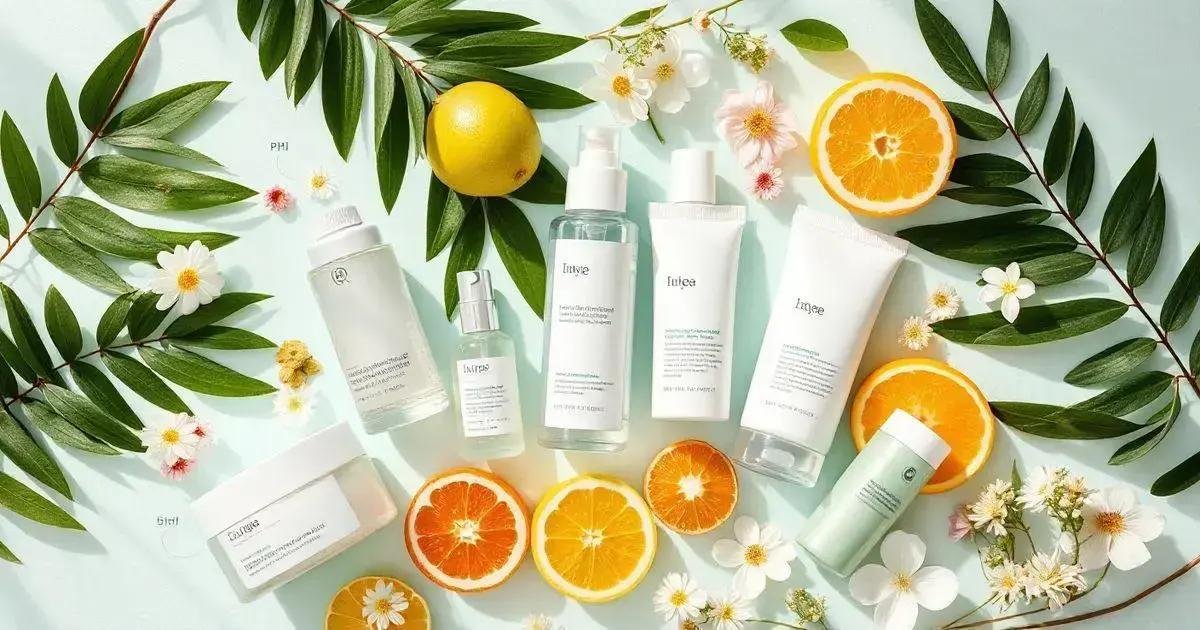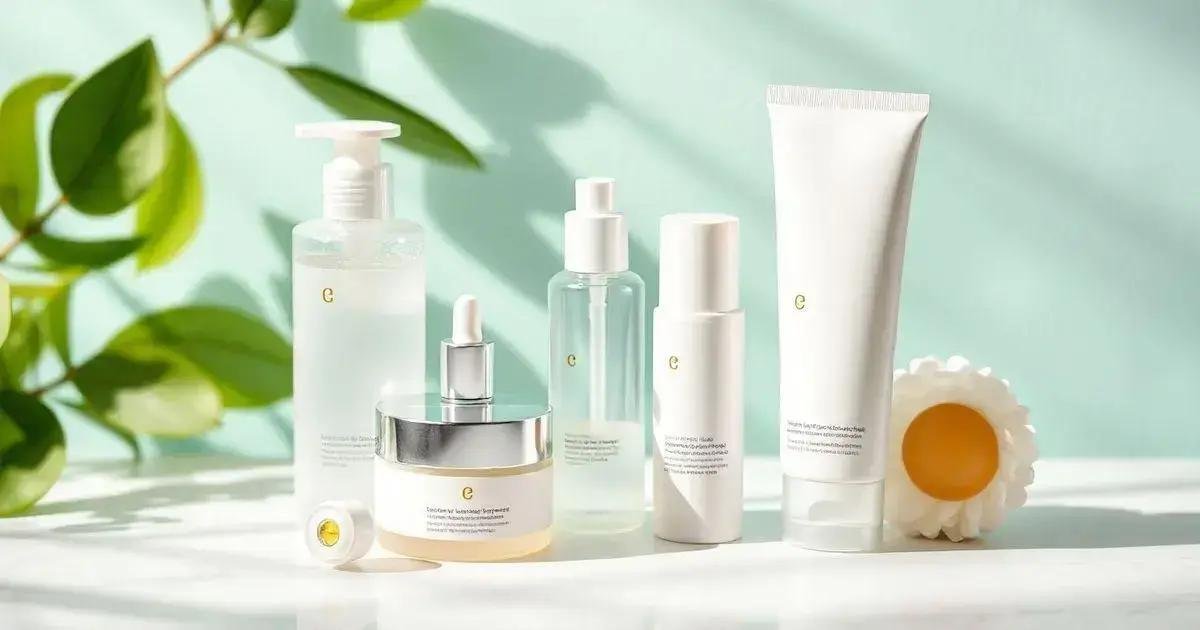Are you tired of dealing with acne, dryness, and dullness in your skin? Discover the secret to a radiant complexion with a personalized skincare routine.
With the right products and techniques, you can achieve glowing skin that turns heads.
In this comprehensive guide, we’ll explore the essential steps to follow for a healthy, youthful complexion.
Table of Contents
What is Skincare and Why is it Important?
Skincare is a vital part of our daily routine that involves a series of steps aimed at cleansing, toning, moisturizing, and protecting our skin from harm. By taking care of our skin, we can prevent various skin problems such as acne, premature aging, and skin damage. It’s essential to understand that every individual has unique skin needs, and a customized skincare routine is the key to achieving healthy, glowing skin. In this article, we’ll delve into the world of skincare, exploring the importance of each step and providing tips and tricks to help you create a personalized skincare routine that suits your skin type and concerns.
Understanding your skin type is crucial in creating an effective skincare routine. There are four main skin types: normal, dry, oily, and combination. Normal skin is balanced, with neither too much nor too little oil production. Dry skin lacks moisture and can appear flaky, while oily skin produces excess oil, leading to clogged pores. Combination skin has both oily and dry areas, making it challenging to find the right products. Knowing your skin type helps you identify the right products and techniques to address your specific concerns, such as acne, hyperpigmentation, or dullness.
Cleansing is the first step in a successful skincare routine, and it’s essential to do it correctly. Using the right cleanser for your skin type can make a significant difference in the overall health and appearance of your skin. A gentle, non-foaming cleanser is suitable for sensitive skin, while a foaming cleanser can be effective for normal to oily skin. When cleansing, it’s crucial to remove all makeup, dirt, and impurities without stripping the skin of its natural oils. Use lukewarm water, and avoid harsh exfoliants or rough washcloths that can cause irritation.
Toning is a crucial step in a skincare routine that balances the skin’s pH and removes any remaining impurities after cleansing. Toning helps to tighten pores, reduce inflammation, and prepare the skin for further product absorption. Use a toner that suits your skin type, whether it’s a hydrating toner for dry skin or a clarifying toner for oily skin. Apply the toner with a cotton pad, sweeping it across the face in an upward and outward motion, avoiding the delicate areas around the eyes and mouth.
Moisturizing is a critical step in a skincare routine that helps to lock in hydration, soothe dryness, and protect the skin from environmental stressors. Choose a moisturizer that suits your skin type, whether it’s a lightweight moisturizer for oily skin or a rich, creamy moisturizer for dry skin. Apply the moisturizer immediately after toning, while the skin is still damp, to help the product absorb better. Massage the moisturizer into the skin, using gentle, upward strokes, to increase blood flow and reduce the appearance of fine lines and wrinkles.
Sun protection is an essential part of a skincare routine that prevents premature aging, skin damage, and even skin cancer. UV rays can cause photoaging, dark spots, and wrinkles, making it crucial to use a broad-spectrum sunscreen with an SPF of at least 30. Apply the sunscreen 15-30 minutes before going outside, and reapply every two hours or immediately after swimming or sweating. Additionally, wear protective clothing, seek shade, and avoid peak sun hours to minimize your exposure to UV rays.
Understanding Your Skin Type: Normal, Dry, Oily, or Combination?

Skincare is not just a routine, it’s a vital part of maintaining healthy and glowing skin. By understanding your skin type, you can create a personalized skincare routine that addresses your specific concerns, such as acne, dryness, or hyperpigmentation. Whether you have normal, dry, oily, or combination skin, there are specific products and techniques that can help you achieve your skin goals.
Normal Skin
Normal skin is characterized by a balanced pH level and neither too much nor too little oil production. If you have normal skin, you’re lucky! You can use a gentle cleanser and a lightweight moisturizer to keep your skin hydrated and balanced.
Dry Skin
Dry skin lacks moisture and can appear flaky and rough. To combat dry skin, use a rich moisturizer and a hydrating serum to lock in moisture.
Oily Skin
Oily skin produces excess oil, leading to clogged pores and acne. Use a foaming cleanser and a lightweight moisturizer to control oil production.
Combination Skin
Combination skin has both oily and dry areas, making it challenging to find the right products. Use a gentle cleanser and a lightweight moisturizer on oily areas, and a rich moisturizer on dry areas.
Cleansing is the first step in a successful skincare routine. It’s essential to remove dirt, impurities, and makeup from the skin without stripping it of its natural oils. Use a gentle cleanser that suits your skin type, whether it’s a non-foaming cleanser for dry skin or a foaming cleanser for oily skin. Be gentle when cleansing, and avoid using harsh exfoliants or rough washcloths that can cause irritation.
Toning is a crucial step in a skincare routine that balances the skin’s pH and removes any remaining impurities after cleansing. Use a toner that suits your skin type, whether it’s a hydrating toner for dry skin or a clarifying toner for oily skin. Apply the toner with a cotton pad, sweeping it across the face in an upward and outward motion, avoiding the delicate areas around the eyes and mouth.
Moisturizing is a critical step in a skincare routine that helps to lock in hydration, soothe dryness, and protect the skin from environmental stressors. Choose a moisturizer that suits your skin type, whether it’s a lightweight moisturizer for oily skin or a rich, creamy moisturizer for dry skin. Apply the moisturizer immediately after toning, while the skin is still damp, to help the product absorb better.
Sun protection is an essential part of a skincare routine that prevents premature aging, skin damage, and even skin cancer. UV rays can cause photoaging, dark spots, and wrinkles, making it crucial to use a broad-spectrum sunscreen with an SPF of at least 30. Apply the sunscreen 15-30 minutes before going outside, and reapply every two hours or immediately after swimming or sweating.
Cleansing: The First Step in a Successful Skincare Routine
Cleansing is the foundation of a successful skincare routine. It’s essential to remove dirt, impurities, and makeup from the skin without stripping it of its natural oils.
Use a gentle cleanser that suits your skin type, whether it’s a non-foaming cleanser for dry skin or a foaming cleanser for oily skin. Be gentle when cleansing, and avoid using harsh exfoliants or rough washcloths that can cause irritation.
Cleansing helps to prevent clogged pores, reduces the appearance of fine lines and wrinkles, and prepares the skin for further product absorption.
By incorporating cleansing into your daily routine, you’ll be able to achieve healthier, more radiant-looking skin.
Toning: Balancing Your Skin’s pH for a Healthy Glow

Toning is a crucial step in a skincare routine that helps to balance the skin’s pH and remove any remaining impurities after cleansing. Using a toner that suits your skin type, whether it’s a hydrating toner for dry skin or a clarifying toner for oily skin, can help to tighten pores, reduce inflammation, and prepare the skin for further product absorption.
Apply the toner with a cotton pad, sweeping it across the face in an upward and outward motion, avoiding the delicate areas around the eyes and mouth.
By incorporating toning into your daily routine, you’ll be able to achieve a healthy, radiant complexion.
Moisturizing: Locking in Hydration for Soft, Supple Skin
Moisturizing is a crucial step in a skincare routine that helps to lock in hydration and soothe dryness. Using a moisturizer that suits your skin type, whether it’s a lightweight moisturizer for oily skin or a rich, creamy moisturizer for dry skin, can help to soften fine lines and wrinkles, reduce the appearance of pores, and leave your skin feeling soft and supple.
Apply the moisturizer immediately after toning, while the skin is still damp, to help the product absorb better. By incorporating moisturizing into your daily routine, you’ll be able to achieve healthy, glowing skin that looks and feels amazing.
Sun Protection: Preventing Premature Aging and Skin Damage

Sun protection is a crucial step in a skincare routine that helps to prevent premature aging and skin damage. UV rays can cause photoaging, dark spots, and wrinkles, making it essential to use a broad-spectrum sunscreen with an SPF of at least 30. Apply the sunscreen 15-30 minutes before going outside, and reapply every two hours or immediately after swimming or sweating.
In addition to using sunscreen, wear protective clothing, seek shade, and avoid peak sun hours to minimize your exposure to UV rays. By incorporating sun protection into your daily routine, you’ll be able to prevent premature aging and skin damage, and maintain healthy, youthful-looking skin.
FAQ – Frequently Asked Questions about Skincare
What is the importance of cleansing in a skincare routine?
Cleansing is the first step in a successful skincare routine. It helps to remove dirt, impurities, and makeup from the skin, preparing it for further product absorption.
How can toning help my skin?
Toning helps to balance the skin’s pH, remove any remaining impurities after cleansing, and prepare the skin for further product absorption.
Why is moisturizing important?
Moisturizing helps to lock in hydration, soothe dryness, and leave skin feeling soft and supple.
What is the importance of sun protection?
Sun protection helps to prevent premature aging and skin damage by blocking UV rays.
How can I get started with a skincare routine?
Start by cleansing, toning, and moisturizing your skin regularly. Consider consulting with a dermatologist or skincare professional for personalized advice.
What are some common skin types?
Common skin types include normal, dry, oily, and combination skin.
Can I use the same skincare products for my entire face?
No, different areas of the face may require different products. Consult with a dermatologist or skincare professional for personalized advice.



